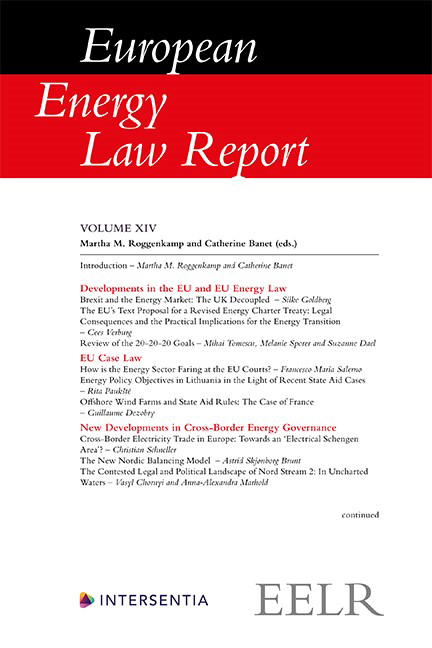Chapter IV - How is the Energy Sector Faring at the EU Courts?
Published online by Cambridge University Press: 26 May 2022
Summary
INTRODUCTION
This chapter presents an overview of the case law of the European Courts in the energy sector in 2019. It should be noted that it basically revolved around the following two areas: (i) State aid, and, in particular the issue of ‘State resources’; and (ii) issues of sector-specific regulation, stemming from solidarity and public service obligations.
The chapter tracks this broad divide, starting with the case law on State aid. Thus, section 2 first discusses the judgment of 28 March 2019 in Germany v. Commission and the judgment of 20 September 2019 in FVE Hol y šov I and Others v. Commission, both from the point of view of State resources. Next, section 3 starts with an analysis of the judgment in Poland v. Commission (OPAL) of 10 September 2019 on the principle of energy solidarity, followed by a discussion of the judgment in Repsol Butano of 11 April 2019 on public service obligations. The section concludes by presenting the judgment of 15 May 2019 in Achema and Others v. Commission, which is at the interface between State aid and public service obligations. In section 4 we provide concluding remarks and an overview of some pending cases.
STATE AID CASES: THE NOTION OF STATE RESOURCES
Among the cumulative criteria for a measure to be classified as State aid under Article 107(1) of the Treaty on the Functioning of the European Union (TFEU), the criterion of State resources features prominently in energy cases. This is because in many instances, the resources do not proceed from the State budget, but from consumers. The mechanism through which the State manages the money flows and channels them to the beneficiary energy companies is thus of paramount importance to determine if a measure is ‘aid’ or not.
In the E ssent and Vent de Col e re9 judgments, the thrust of the analysis was whether funds passing through a public or publicly controlled body or serving a public purpose could be regarded as being under ‘constant public control’.
- Type
- Chapter
- Information
- European Energy Law Report , pp. 79 - 96Publisher: IntersentiaPrint publication year: 2021



